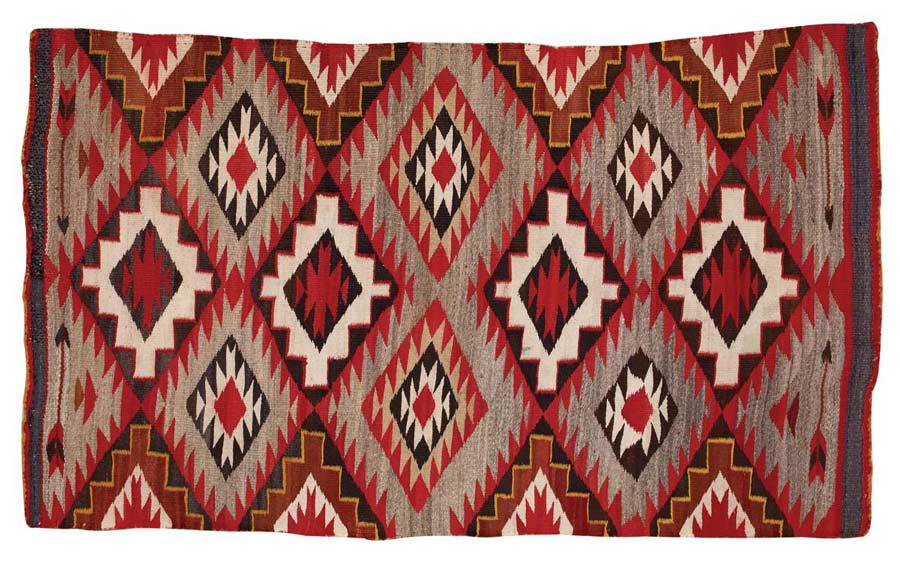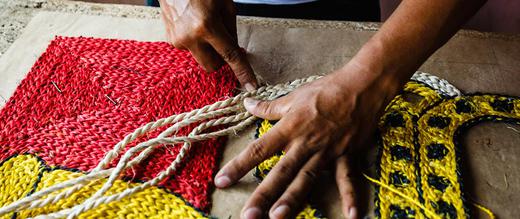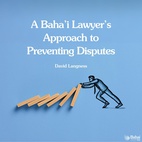The views expressed in our content reflect individual perspectives and do not represent the official views of the Baha'i Faith.
An understanding of the real produces invariably repudiation of and disgust for the counterfeit. – Alfred Lunt.
More than just about any other art form, I love Navajo weaving. As a result, I’ve acquired a few beautiful handmade Navajo rugs over the course of my life, and they beautify the walls of my home. Every time I walk by one, I can’t stop looking at the gorgeous craftsmanship—or maybe I should say the gorgeous craft-woman-ship—that went into the creation of that rug.
Navajo weavers are traditionally women; and those women have incredible patience and amazing skills. It takes months and sometimes even years to weave a Navajo rug. Why? Well, many of the weavers get their wool from raising their own sheep. They shear the sheep and clean the wool and dye it with native vegetal plants they harvest, then card and clean and spin the wool by hand. All of this hard work takes place long before any rugs get woven. Then the weaving of the rug, a laborious and exacting process, can finally start. The weaver typically works outside on a large homemade loom; designs the patterns and colors in the rug herself; and then weaves it, stitch by tiny stitch, into the final work of art. Many of the traditional patterns are so intricate that they require incredible attention to detail, sharp eyesight and a very steady hand.

Navajo Rug
Anyway, years ago, when I was just starting out in my appreciation of Navajo weaving, I bought a rug that I liked. It looked and felt authentic, but I later learned, as my knowledge of the craft expanded a bit, that the rug was counterfeit. Apparently Navajo weaving has become so admired that it has inspired a whole cottage industry of copiers and imitators, rugs made by non-Navajos or even woven by machines. Some of the fakes can fool even the experts, I’ve heard.
Of course, this meant someone somewhere had ripped off the artistic work of generations of Navajo women, stealing their craft and creativity for the profit motive. This thought really disgusted me.
So I had to decide what to do with my fake Navajo weaving. I still liked it—the design and the colors certainly looked good—but I now knew that they weren’t, which ruined any aesthetic appreciation I may have had. I decided to take it off the wall and use it on the floor, not as a real Navajo weaving but just as a regular throw rug. That seemed right to me—to give the real weavings I own a place of honor; and to relegate any copies to the mundane duty of collecting dust.
This whole experience made me much more careful when I bought my next Navajo weaving; but it also gave me some experience determining authenticity or imitation. First, I determined that I wouldn’t be fooled again, so I began to educate myself. I read books, collecting a small library of expert opinion. Through reading, talking to weavers and comparing the imitations and the real thing, I learned how to spot the differences between an authentic Navajo rug and a fake.
As I educated myself, I started to reflect more on the idea of authenticity and imitation in general. I meditated on the concept of the real and the counterfeit, the true and the false, especially as they regard belief and faith. I went, as I often do, to the Baha’i teachings, where I found spiritual guidance about the real and the not-so-real:
The counterfeit or imitation of true religion has adulterated human belief and the foundations have been lost sight of. The variance of these imitations has produced enmity and strife, war and bloodshed. – Abdu’l-Baha, Foundations of World Unity, p. 16.
Holy souls are like soil which has been plowed and tilled with much earnest labor; the thorns and thistles cast aside and all weeds uprooted. Such soil is most fruitful and the harvest from it will prove full and plenteous. In this same way man must free himself from the weeds of ignorance, thorns of superstitions and thistles of imitations, that he may discover reality in the harvests of true knowledge. – Ibid., p. 76.
So how do you tell the difference, in your own life, between what’s real and what’s fake? How do you spot the imitation and the counterfeit, whether material or spiritual? How do you separate, in your heart and mind, what’s true and what’s not?
As I explored this subject, it struck me that these questions about authenticity have an enormous bearing on our lives. Acquiring the skill and the discernment to tell the difference between real and imitation can make a huge difference in our happiness, our self-awareness, and our success. The ability to spot a fake—whether a counterfeit bill, a counterfeit emotion or a counterfeit belief—helps us navigate our existence in the best possible way. It helps us avoid disappointments, but it also helps us stay authentic to our truest selves. No one wants to mistake anything false for reality, especially in the important areas of life—values, moral convictions, and beliefs.
In this short series of essays, we’ll take a serious look at those important questions; and see if we can determine how to sufficiently educate ourselves so we can see the differences that separate authentic belief from the many imitations people accept as real.
Next: Distinguishing the Genuine from the Counterfeit
You May Also Like
Comments

















Real or counterfeit?